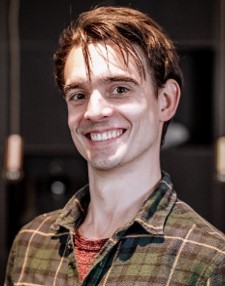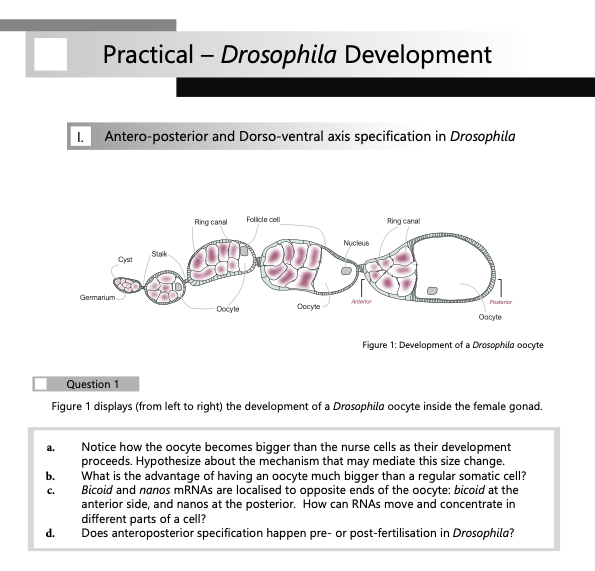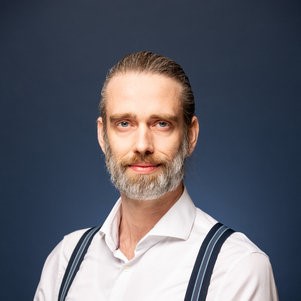Open learning materials for a multidisciplinary education programme
Open Education Week 2022 | Blogpost by Timon Idema
The goal of the OLMO, or `open leermaterialen voor een multidisciplinaire opleiding’ (open learning materials for a multidisciplinary education programme) project is to develop an integrated collection of open education resources (OER) that covers the full range of the Nanobiology BSc program. The Nanobiology program is a joint-degree program (both BSc and MSc) offered by TU Delft and Erasmus University, in which students learn to apply physical principles and techniques to biological and medical problems.
More than just replacing proprietary materials with open resources, in this project we aim to bridge the gap in the literature that the teachers in the program observe, as well as the existing ‘language barrier’ between biology and physics. The resources that are now used in the Nanobiology program are either unpublished resources that are personally designed by the teachers, or existing literature that is not specifically designed for the field of Nanobiology. By designing and publishing specialized literature, we can bring the different disciplines of Nanobiology together more easily.
The project was set up in close collaboration between the Nanobiology program and the TU Delft library. For its realization, we worked with teachers and students from the program, looking for existing open materials that we could adopt, and preparing our own materials for open publication. We quickly discovered that content alone is not sufficient, and therefore also hired design students, who worked with the Nanobiology students and teachers to develop high-quality materials. Working with teachers and students from the very first steps of the development phase helps us create materials that resonate with everyone, and will hopefully be used for many years to come.
Below, we showcase two examples of results from the project, and the perspectives of people who worked on different aspects of its realization.
By designing and publishing specialized literature, we can bring the different disciplines of Nanobiology together more easily.
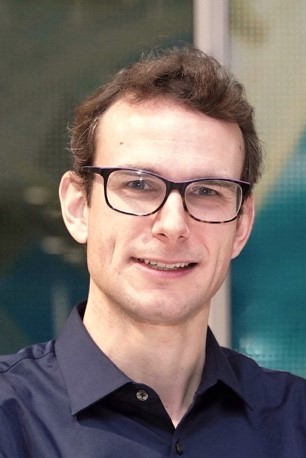
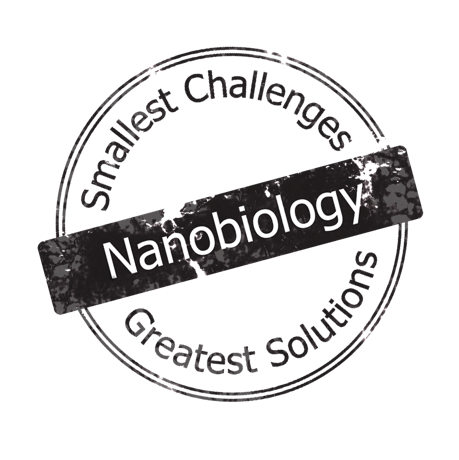
Students on the multidisciplinary approach of OLMO
One of the main benefits of today´s digitalized era is a wide and wide access to information from almost anywhere in the world. I was therefore very proud of my home university and study program, when I have heard of the ambitions to make Nanobiology study materials open source via the OLMO project. Striving to dedicate my future career to education and strongly believing in the idea of open access information, I have therefore joined the initiative as one of the “teacher assistants”.
My main task has been to review and update materials used for the Biochemistry course. Working on them, I have thought of ways to make the lecture slides more structured, came up with ideas for new graphics that would accompany the topic explanation and served as a communication link between different participating parties - for instance between the professor and a design student, who was creating the new infographics - which has been a thrilling challenge on its own.
I sincerely hope that OLMO project will inspire not only students to learn more about the field of Nanobiology, but also other programs and institutions to make their gathered knowledge available to everyone everywhere.
I have thought of ways to make the lecture slides more structured, came up with ideas for new graphics that would accompany the topic explanation and served as a communication link between different participating parties
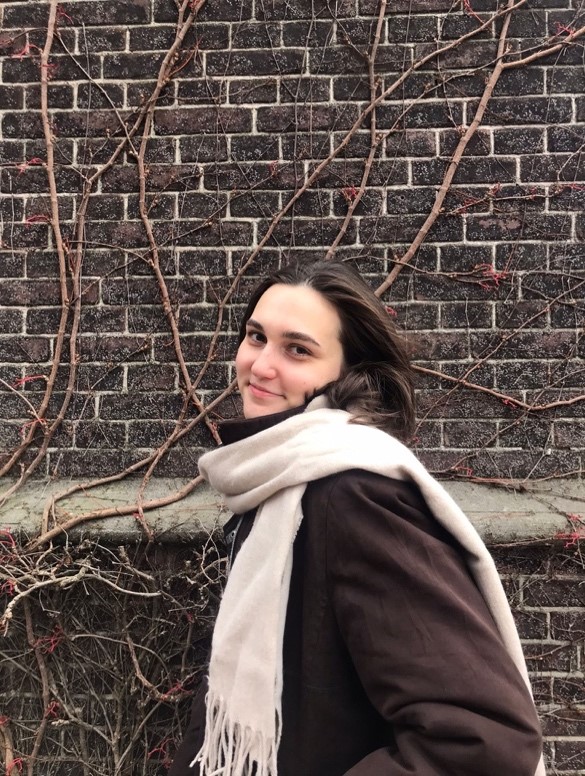
As a student there is a difference between the work you do for your university projects, and the work you are eventually going to do in “the real world”. The real world is this scary far away place that is only touched sporadically throughout your university journey, and because of this, in my opinion, students are faced with a daunting gap between their life as a student and their work life.
What the OLMO project has done for me is bridge that gap. As a designer that is constantly surrounded by other designers it is hard to estimate how people outside of this bubble will react to your work. How do people who do not know much about graphic design formulate what they want from you? How do they explain themselves if they have never worked with software like InDesign or Illustrator? And what is the workflow like with real people who are busy? The OLMO projects has answered all these questions for me. It forces you to think about workflows, when it is best to contact a professor and how to present your designs in a format that facilitates feedback.
The OLMO project for me is a bridge between a learning environment and a working environment. You not only develop your skills as a designer, but also make real content that is valuable for people years to come. It is an environment that feels very open, they value your insights as a student because they truly believe that your expertise can elevate the content. Content that you create with other students who have their own expertise for a great cause: Digital learning materials that will one day hopefully be used and created across many different universities.
... they value your insights as a student because they truly believe that your expertise can elevate the content.

Example 1: Practical for the Evolutionairy Developmental Biology course
Student's perspective
In 2021 I joined the OLMO project as a student assistant. The topic of Open Science has been dear to me before; I feel strongly that the world would benefit from more sharing of knowledge. Especially fields like nanobiology, born out of need for multidisciplinary researchers, should in my opinion be open for everyone to learn from.
With this project I have had the chance to contribute to this vision: we started with hunting for open source materials that could replace (parts of) the materials already being used in our program (think expensive books, copyrighted pictures, etc). However, soon enough we came across a problem: especially for biology subjects, the already existing information out there was either not specific enough, or were not stylized to our liking and generally lacked a coherent designed “look”. So, we decided to produce our own open source materials, taking from the vast amount of practicals, lectures and homework sets our teachers have made over the years.
For me this meant for example transcribing lectures into lecture notes. With this came also a bit of creative freedom: we decided to go for a professional look, trying to mimic a biology book, which meant I had to critically evaluate the information given in the lectures. I also had the independence to add extra in-depth content. This part of the project I liked very much: within certain boundaries, I could influence the information students will learn in the future, and try to make it as interesting as possible.
We did notice it takes a lot of time to produce these materials. We have yet to see the students use our materials, but upcoming year we hope to replace a lot and we are excited to spot our hard work in the curriculum.
This part of the project I liked very much: within certain boundaries, I could influence the information students will learn in the future, and try to make it as interesting as possible.
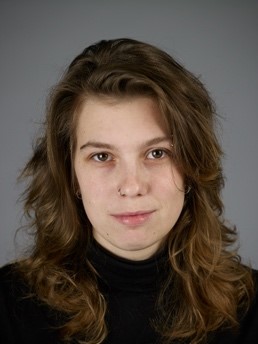
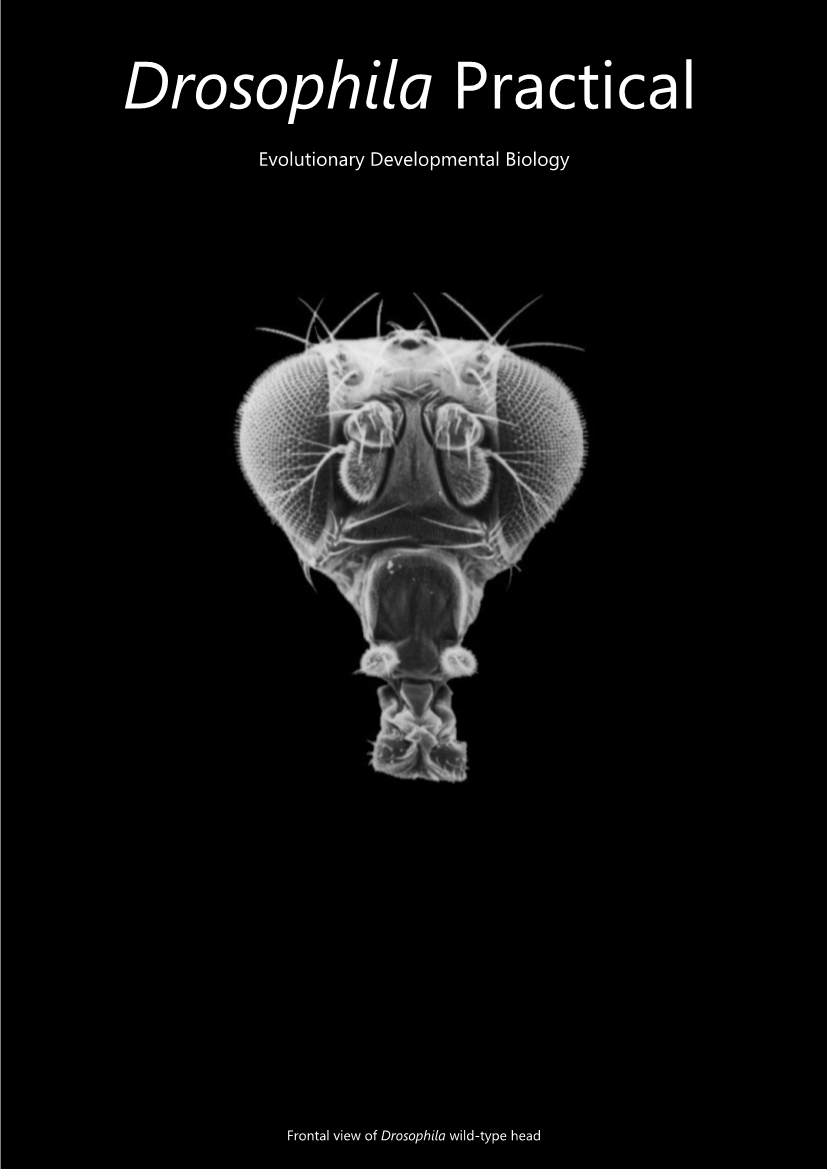
Teacher's perspective
We teach Evolutionary Developmental Biology within the Nanobiology BSc and have collaborated within OLMO to transform our copyright-protected lectures, practicals and videos into open tools. In collaboration with Myrthe, a Nanobiology BSc student, we transformed a lecture about Drosophila embryonic development and an associated practical to a non-copyrighted version by using copyright-free images, moving away from the traditional book we had been using for several years. When images could not be found, they were redrawn with the help of other TU Delft students. We also made an educational video about different signal transduction pathways, again using copyright-free images.
This all has been possible thanks to OLMO. It has been really interesting and fulfilling to collaborate with students to move this project forward. We were in continuous communication with them, supervising figure development, figure and text editing, even choosing the right colors! We are of course still not done and are very much looking forward to make additional copyright-free lectures, practicals and videos. Some of these include how meiosis works, a self-study about how multicellular organisms evolved from unicellular ones, how germ cells are created and what their important characteristics are, etc. Lots to talk about evolution and development!
It has been really interesting and fulfilling to collaborate with students to move this project forward.
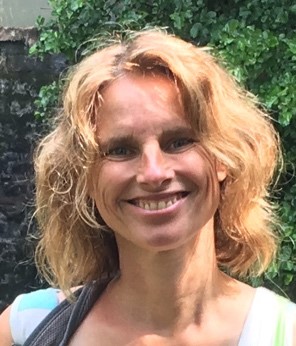
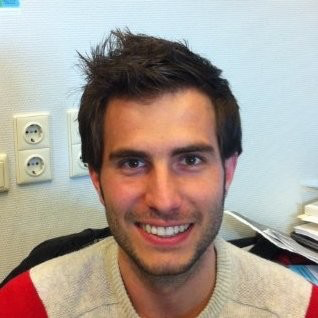
Example 2: Assignments for the Physics 1B (electricity and magnetism) course
Hodgkin-Huxley model (25p)
By creating a mathematical model describing the neural action potential, Hodgkin and Huxley showed how natrium and potassium channels in the neuronal cell membrane allow signals to travel along the neurons. In 1962 they were awarded the Nobel prize for physiology and medicine for their efforts (Fee. ,2018).
They modelled the cell membrane as an RC circuit to study the dynamics of the action potential over time. The cell membrane itself does not allow charged particles through, and can thus act as a capacitor. Charges can be passed/pumped over the cell membrane through potassium channel (green), calcium channel (purple) and a leakage gate (orange) (see Figure 2A). The channels/gate all act in parallel, can all both pump charge particles against an electrostatic potential difference and let charged particles leak back again. The charge pumping is modelled by emfs (?Na, ?K, ?L), the leakage is modelled by a resistance (?Na, ?K, ?L), and the membrane itself as a capacitor (?m) (see Figure 2B) (Mondeel, 2013). Here we will assume that the resistances of the channels and gate are constant, but in reality, they are voltage and time dependent.
Figure 2: A) Schematic representation of the cell membrane. B) the suiting RC circuit of the cell membrane. The resistor is taken from: "Resistor" by Studio Refine is licensed under CC BY 3.0. The battery is taken from: "Two cell battery" by Studio Refine is licensed under CC BY 3.0.
What are the inward (upward) currents (?N_a_,_?K_,_?L_) through each channel, and the total inward (upward) current through the membrane in Figure 2A and Figure 2B? Express your answer in terms of the membrane potential ? _(defined to be positive when the potential is highest on the inside (upper)), the emfs of each channel/gate, and the resistances of each channel/gate.
Fee, M. (2018). Introduction to Neural Computation (Lecture 4,5). MIT Open course ware. URL: https://ocw.mit.edu/courses/brain-and-cognitive-sciences/9-40-introduction-to-neural- computation-spring-2018/lecture-notes/index.htm
Mondeel, T. (2013). Modelling Neuronal Excitation: The Hodgkin-Huxley Model. Vrije Universiteit Amsterdam. URL: https://www.few.vu.nl/~rplanque/resources/Theses/Thesis-HogdkinHuxley-Thierry-Mondeel.pdf
Student's perspective
A university is a place where different generations come together to share knowledge. As a student I have always found this to be an inspiring concept. When I heard about the OLMO project I immediately felt a connection with the idea behind the project: making the content of the nanobiology program available for all students worldwide. To make this work, different parties must be involved, also student assistants who understand the content of the course and know how to alter the content to make it publication ready.
Together with professor Martin Depken, I have worked on the course physics 1B that covers electromagnetism. Since there is a lot of content already available on this topic the challenge was to select pre-existing content, integrate it in the written lecture notes by Martin and apply this to biology. After searching through different materials, and reading a lot on the internet, the final collection of Physics 1B consist out of the following components:
- Short knowledge clips made from open-source MIT lectures
- Lecture notes with different biological applications
- 4 Problem sets with an integrated nanobiology focused application.
Personally, I really liked to make the problem sets and the lecture notes together with Martin to develop a collection of electromagnetism related material focussed on nanobiology. Hopefully our collection will be useful for other students, and will this project be the start of sharing our knowledge on a larger scale.
... making the content of the nanobiology program available for all students worldwide.
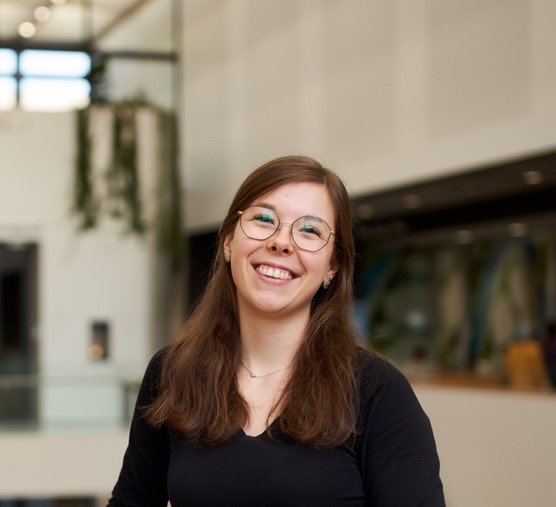
Teacher's perspective
It is important for our Nanobiology students to see the very direct connection that exists between basic physics and biology. To date, most undergraduate physics has been explained using classical physics scenarios. By taking part in the OLMO project we have started to change this, and now have some wonderful examples and questions building showing the deep connection between physics and biology already in a first year course.
By taking part in the OLMO project we have started to change this, and now have some wonderful examples and questions building showing the deep connection between physics and biology already in a first year course.
Library's perspective
Libraries have come a long way from managing collections of physical books. Not only have we moved from paper to digital materials, we are also moving towards open science and open education. As the coordinator for open education of the TU Delft Library, I come across a lot of people with amazing ideas for creating and publishing their teaching materials. However, not often do I come across a project as ambitious as OLMO. The goal of the OLMO project is to create and adopt open educational resources as the basis for the courses that are taught in the Nanobiology bachelor program. Doing this requires investment of time from teachers, but also a working support infrastructure. In formulating the project proposal, Timon and I worked closely together so that we could determine how the TU Delft Library could assist with support on finding and publishing open educational resources.
The most important thing we agreed on: teachers have very limited time, so they should be able to do what they do best. They excel in organizing courses and designing and using teaching materials. The library can help find useful existing materials, make materials fit for publication as an open resource, and facilitate publishing these resources. Within the OLMO project we designed a workflow where the library trains students on making teaching materials fit for publication. Students learn how to find useful materials, but also how to design materials that can be publish as an open resource, without breaking copyright rules. Teachers in turn judge the results, to make sure it fits their course.
The OLMO project is showing that creating quality open educational resources is an endeavour that works very efficiently if you have ambitious students willing to do the work, teachers that are motivated to improve their materials, and a support infrastructure with the library. We have already dubbed this way of working with students the ‘OLMO approach’. We believe that this could jumpstart the transition of digital learning materials to open alternatives across the university and beyond.
Teachers have very limited time, so they should be able to do what they do best.
